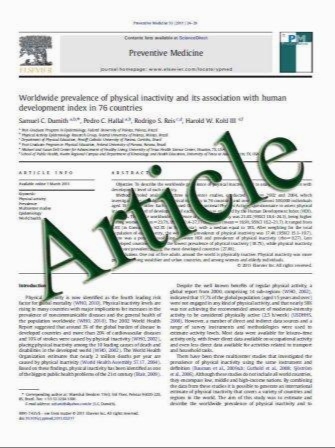The differences of sarcopenia-related phenotypes: effects of gender and population
- نوع فایل : کتاب
- زبان : انگلیسی
- مؤلف : Kai Zhong & Shu-feng Lei & Fang Yang & Xiang-ding Chen & Li-jun Tan & Xue-zhen Zhu & Qing Tian & Hong-wen Deng
- چاپ و سال / کشور: 2011
Description
Sarcopenia is a serious condition especially in the elderly population mainly characterized by the loss of skeletal muscle mass and strength with aging. Extremity skeletal muscle mass index (EMMI) (sum of skeletal muscle mass in arms and legs/height2) is gaining popularity in sarcopenia definition (less than two standard deviations below the mean of a young adult reference group), but little is known about the gender- and population-specific differences of EMMI. This study aimed at investigating the differences of EMMI, arm muscle mass index (AMMI), and leg muscle mass index (LMMI) between gender groups and populations (Chinese vs. Caucasians). The participants included 1,809 Chinese and 362 Caucasians with normal weight aged from 19 to 45 years old. Extremity muscle mass, arm muscle mass, and leg muscle mass were measured by using dual energy x-ray absorptiometry. Independent sample t tests were used to analyze the differences in muscle mass indexes between the studied groups. All the study parameters including EMMIs, AMMIs, and LMMIs were significantly higher (P.0.0003) in the Caucasian group than in the Chinese group and also higher in the male group than in the female group, and these significant differences (P.0.0005) remained after adjusting for age by simple regressions. The detected differences of muscle mass indexes between different gender and ethnic groups may provide important implications in their different risk of future sarcopenia.
Eur Rev Aging Phys Act DOI 10.1007/s11556-011-0082-0 Received: 12 January 2011 / Accepted: 5 June 2011


